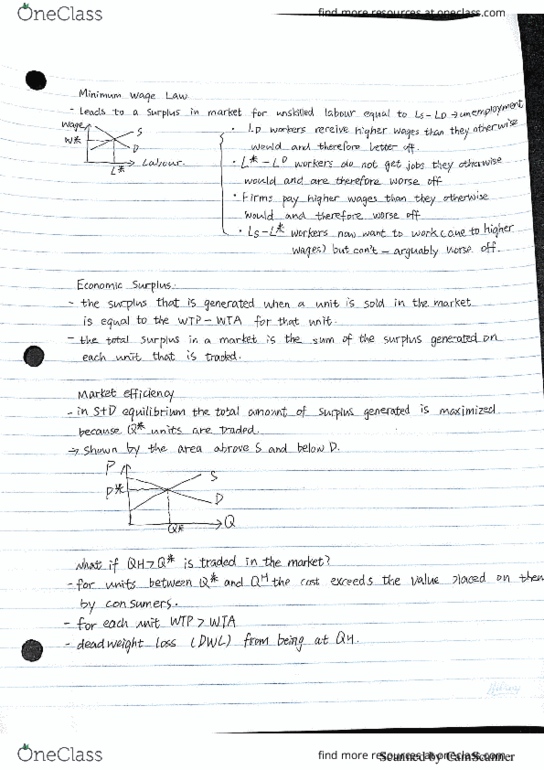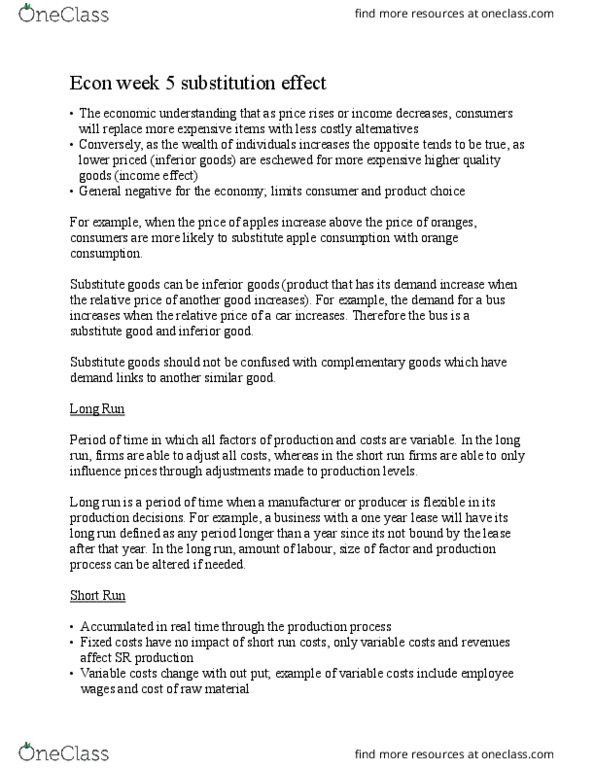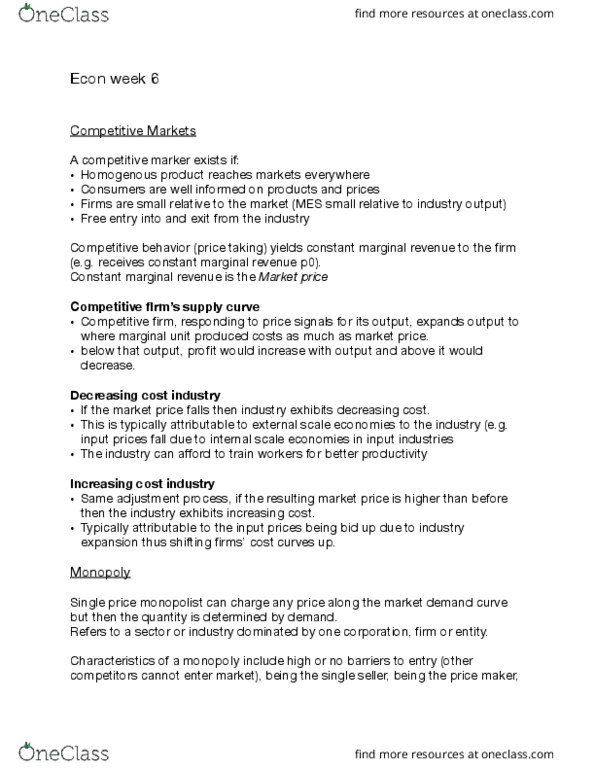ECON 111 Lecture Notes - Lecture 6: Substitute Good, Inferior Good, Complementary Good
ECON 111 verified notes
6/12View all

Econ week 5 substitution effect
•The economic understanding that as price rises or income decreases, consumers
will replace more expensive items with less costly alternatives
•Conversely, as the wealth of individuals increases the opposite tends to be true, as
lower priced (inferior goods) are eschewed for more expensive higher quality
goods (income effect)
•General negative for the economy; limits consumer and product choice
For example, when the price of apples increase above the price of oranges,
consumers are more likely to substitute apple consumption with orange
consumption.
Substitute goods can be inferior goods (product that has its demand increase when
the relative price of another good increases). For example, the demand for a bus
increases when the relative price of a car increases. Therefore the bus is a
substitute good and inferior good.
Substitute goods should not be confused with complementary goods which have
demand links to another similar good.
Long Run
Period of time in which all factors of production and costs are variable. In the long
run, firms are able to adjust all costs, whereas in the short run firms are able to only
influence prices through adjustments made to production levels.
Long run is a period of time when a manufacturer or producer is flexible in its
production decisions. For example, a business with a one year lease will have its
long run defined as any period longer than a year since its not bound by the lease
after that year. In the long run, amount of labour, size of factor and production
process can be altered if needed.
Short Run
•Accumulated in real time through the production process
•Fixed costs have no impact of short run costs, only variable costs and revenues
affect SR production
•Variable costs change with out put; example of variable costs include employee
wages and cost of raw material
Document Summary
For example, when the price of apples increase above the price of oranges, consumers are more likely to substitute apple consumption with orange consumption. Substitute goods can be inferior goods (product that has its demand increase when the relative price of another good increases). For example, the demand for a bus increases when the relative price of a car increases. Therefore the bus is a substitute good and inferior good. Substitute goods should not be confused with complementary goods which have demand links to another similar good. Period of time in which all factors of production and costs are variable. In the long run, firms are able to adjust all costs, whereas in the short run firms are able to only influence prices through adjustments made to production levels. Long run is a period of time when a manufacturer or producer is flexible in its production decisions.







